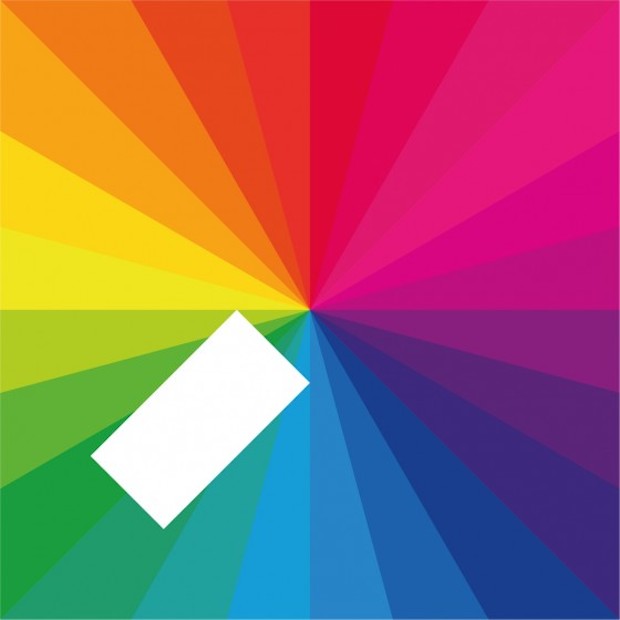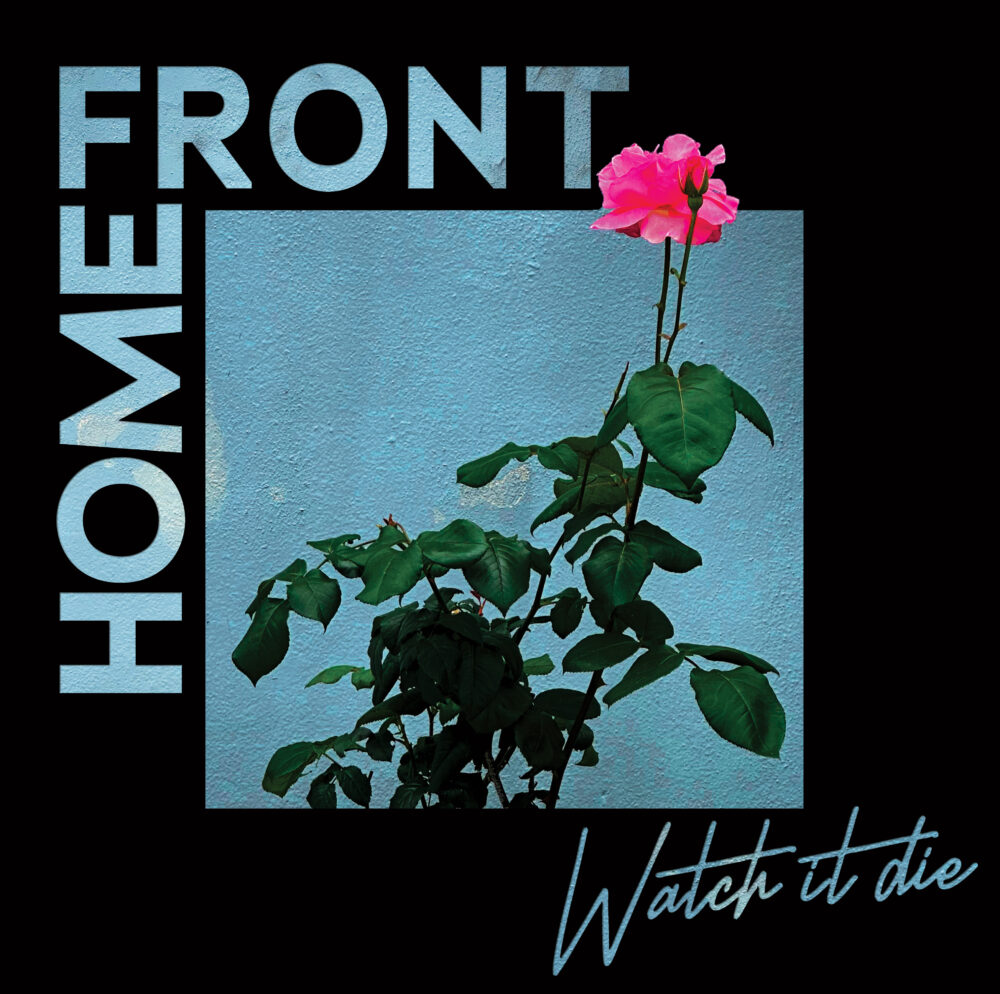When Jamie xx played Coachella, people danced. Maybe that shouldn't be surprising; Jamie xx is, at least on the face of it, a famous dance music producer who made a Drake/Rihanna hit once. But Jamie xx makes wallflower music, and a festival like Coachella is not traditionally kind to people who make wallflower music. The dancing wasn't the exuberant hands-in-the-air stuff that was happening a couple of tents over, where DJs like David Guetta spent the weekend entertaining party people who had presumably just come to hang out at that tent all weekend. But Jamie still had an aircraft-hanger-sized tent packed full of people, something virtually none of the guitar-rock bands playing the festival that weekend could claim. And those people were moving. Considering that Jamie xx's whole live show was a DJ set of blinking, impressionistic, not-exactly-beat-driven electronic music, that's a feat. Other dance-music types who played the festival had famous guests, or crazy light shows, or actual dancers up onstage. Jamie just had himself, standing behind some electronic widgets and playing these thoughtful, murmuring instrumental tracks, and it was still enough to get a few thousand people moving. If you've ever seen, say, Four Tet play a festival, you know that this is not a given. There's a whole universe of people who make splintered, cerebral dance music and who do live shows staring at laptops while people sit around trying to appreciate it. And on the face of it, Jamie xx should fit very much into that world. But there's something friendly and inviting about the music that he makes, something that allows quiet and insular music to translate on a wider scale. And now he's made an album of spectral electronic minimalism that's going to end up soundtracking a whole lot of people's summers, almost entirely because of how fucking good it is. He's a special talent, and this is a special record.
A lot of the early talk about In Colour has been of Jamie xx's fascination with the early days of British rave: The giant castle parties, the intricate networks of pirate radio stations, the new sounds that would catch fire in the underground and then flame out mere months later. He was born in 1988, when that stuff was just starting to take hold across the UK, which means he's far too young to have experienced any of it. And there's a nostalgic glow to the way he plays around with bits and pieces of those old sounds on In Colour. He pulls samples from Fiorucci Made Me Hardcore, an impressionistic 15-minute short film that traces the evolution of British dance culture from the Northern Soul parties of the '60s clear through to the liquid-dancing era. And he builds tracks from specific sounds that harken back to the late '80s and early '90s: Breakbeats, DJ shoutouts, sometimes even crowd noise. But he's not reviving those sounds; he's using them as shades and accents. As much as either of his band's records, In Colour is small and intimate and quiet music, music that derives its power from a certain fragility. A song like the album opener "Gosh" sounds almost like a proper dancefloor banger, with its urgent dancehall-DJ patter and its insistent, shifting drum patterns. But it's a dancefloor banger the same way Jim Jarmusch's Ghost Dog is an action movie. The feeling that it broadcasts isn't all-out euphoria. It's a sort of slow, patient, happy melancholy. It's a track that feels nostalgic for its own existence.
These feelings come through because Jamie is such a master at building these tracks. The songs on In Colour are complicated -- there are a lot of moving parts, melodies layered on top of other melodies -- but it never feels complicated. On the aforementioned "Gosh," all the drums sounds are in the foreground, but behind them there's this lonely foghorn synth line that makes the song stretch out like a long, satisfying sigh. "Seesaw" has these strobing little blips that twinkle like fireflies; they wouldn't be much on their own, but they add a dazzling layer of beauty to an already-pretty song. Toward the end of "I Know There's Gonna Be (Good Times)," when guests Young Thug and Popcaan drop away, the song returns to its lovely, lilting Persuasions sample. But under the Persuasions' warm, crackly voices, there's this muted synth riff worthy of New Order -- the sort of detail that you might not even notice when you first hear the track, but which makes the track in ways that aren't apparent until the 20th time you've heard it. It makes sense, sort of, to call the album minimal (something I've already done in this piece) because of the way these different elements almost never draw attention to themselves. But Jamie is really assembling all these complex interlocking parts in ways that make them sound like they've never been apart, or like they've always belonged together.
As beautifully assembled as the album's instrumental tracks may be, it's the four songs with vocals that keep drawing me back. (Admittedly, this may have everything to do with me being a total dance-music neophyte.) "Stranger In A Room" is a track made without drums sounds, with just these lovely oscillating bloops that seem like they could've soundtracked a documentary about undersea life. Over those pings, Jamie's xx bandmate Oliver Sim intones blankly about the escape and transcendence that can come from absolutely losing yourself in a crowd of people, the wonder of shaking off the self and becoming part of a crowd. And he also sings about longing for that, about looking at the experience from the outside. Both of these are classic clubbing experiences, and here, they're rendered in the form of a track that I simply can't imagine hearing in a club context. Meanwhile, Romy Madley Croft is on two songs. On "Seesaw," her voice is soft and faraway, drowning in a sea of breakbeat snaps and computer hums. On the devastating "Loud Places," though, she's out at front of the restrained, glistening thump, singing about the small connections you can find in big rooms: "I go to loud places to search for someone / To be quiet with, who will take me home." She's answered by a note-perfect sample from Idris Muhammad's 1977 disco track: "I feel music in your eyes." It's maybe the most romantic song I've heard all year. And it gives way to the unlikely, beautiful self-assurance of "I Know There's Gonna Be (Good Times)," with tranquil Popcaan and exultant Young Thug bouncing off of each other like that's what they were trying to do. It's not. Thug and Popcaan were among the many vocalists who tried the song out after Jamie sent it to them. They recorded their parts without any knowledge of each other's parts, and Jamie liked both versions enough to stitch them together. But there's still chemistry on the song; they sound like they're knowingly offsetting each other, like they know they both belong here. That's the magic of In Colour: Jamie xx has found all these disparate elements and ideas and feelings, and he's made them sound like they've always belonged together.
In Colour is out now on Young Turks. Stream it below.
[videoembed size="full_width" alignment="center"][/videoembed]
[videoembed size="full_width" alignment="center"][/videoembed]
Other albums of note out this week:
• Donnie Trumpet & The Social Experiment's transcendently lovely black-music party Surf.
• Florence + The Machine's stormy, cinematic, impressive How Big, How Blue, How Beautiful.
• Sun Kil Moon's grumpy, thoughtful, weirdly spoken-word-driven Universal Themes.
• Girlpool's sharp, heartfelt friendship-punk full-length Before The World Was Big.
• SOAK's lovely, personal Before We Forgot How To Dream.
• Major Lazer's utopian pop blowout Peace Is The Mission.
• Joanna Gruesome's raging, exultant indie-popper Peanut Butter.
• Christopher Owens' power-pop surprise Chrissybaby Forever.
• Algiers' fiery, purposeful self-titled debut.
• Daughn Gibson's twangily gothic Carnation.
• Eternal Summers' upbeat, shimmering indie-popper Gold And Stone.
• Lil Durk's major label drill music debut Remember My Name.
• Downtown Boys side project Malportado Kids' cumbia-inspired dance-punker Total Cultura.
• Paradise Lost's epic gothic death-doom album The Plague Within.
• Thee Oh Sees side project Damaged Bug's rickety, lo-fi Cold Hot Plumbs.
• Fort Lean's tunefully classic-rocking Quiet Day.
• A Sunny Day In Glasgow/Ice Choir side project Roman À Clef's Abandonware.
• Nozinja's Shangaan South African dance album Nozinja Lodge.
• Tenement's DIY power-popper Predatory Highlights.
• Jaga Jazzist's big, skronky Starfire.
• Spray Paint's messy noise-punker Punters On A Barge.
• Iji's twee pop pastiche Whatever Will Happen.
• Herbert's conceptual dance album The Shakes.
• Gold Star's Americana move Dark Days.
• Willie Nelson and Merle Haggard's grizzled-badass team-up Django And Jimmy.
• Ben Lee's still-cute-after-all-these-years Love Is The Great Rebellion.
• Flesh World's grimy punker The Wild Animals In My Life.
• Wild Yaks' explosive debut REJOICE! GOD LOVES WILD YAKS.
• Holychild's self-explanatory The Shape Of Brat Pop To Come.
• Maribou State's thoughtful dance LP Portraits.
• Maruta's death/grind bugout Remain Dystopian.
• Former AIDS Wolf member Drainolith's contorted noise attack Hysteria.
• Encyrcle's dark self-titled speed metaller.
• Jute Gyte's avant-garde black metaller Ship Of Theseus.
• Communions' self-titled EP.
• Citizen Fish's Manmade EP.
• Halflife's Subtle EP.
• HÆLOS' Earth Not Above EP.
• Porcelain Raft's Half Awake EP.
• O-Face's Mint EP.
• Little Children's Traveling Through Darkness EP.
• Lull's self-titled EP.






